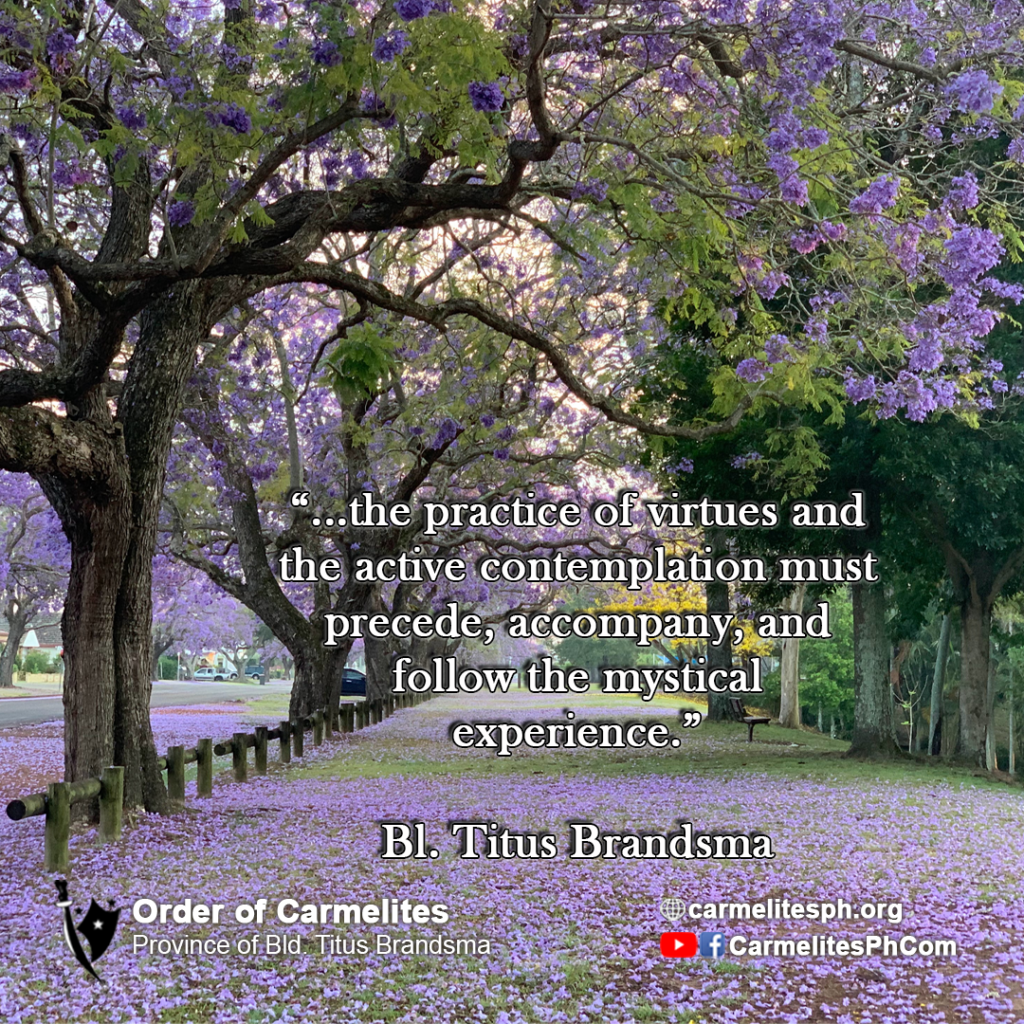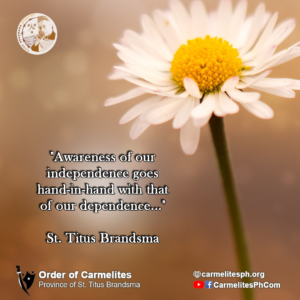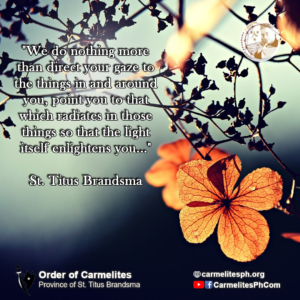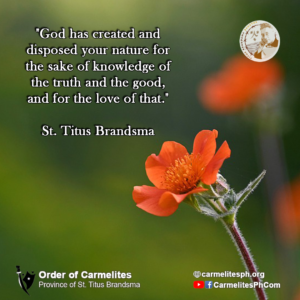
“The school of Carmel, at least in its representative members, observes the happy mean between these two extremes. According to the ancient document concerning the Order’s spirit, the attainment of this high state of mystical communion is put forward as the aim of all Carmelites and all are obliged to conform their lives to this lofty ideal, but at the same time the free character of the mystical grace is insisted upon. St. Teresa in her own masterly way describes how the life of grace is built on natural foundations. The life of grace even in its highest degree is ingrafted into the natural and under its impulse the whole human personality grows to its fullest maturity. She shows how human nature is created by God with a ‘susceptibility’ for these exalted states of grace, but on the other hand the practice of the virtues and the active contemplation must precede, accompany, and follow the mystical experience. That is why, after giving glory to God as the giver of all gifts, she lays particular emphasis on the practice of prayer and virtue. May I say how gratifying it is to me to put before you this idea of the spiritual life of the Order? It has been the constant tradition of Carmel. We find it in the beginning. It is the spirituality of the ‘Institution of the First Monks’. The Carmelite life has a twofold end. We obtain the first by our toil and virtuous efforts, aided by divine grace. It consists in offering to God a holy heart, free from actual stain of sin – the other is communicated to us by a free gift of God, ex mero Dei dono, not only after death but even in this life, and consists in tasting in some way in the heart and experiencing in the mind the strength of the Divine presence and the sweetness of the glory from on high.”
Bl. Titus Brandsma
What do you think of this quote? Write it on the comment section.
📸 Calvin Kurlekar | Unsplash


